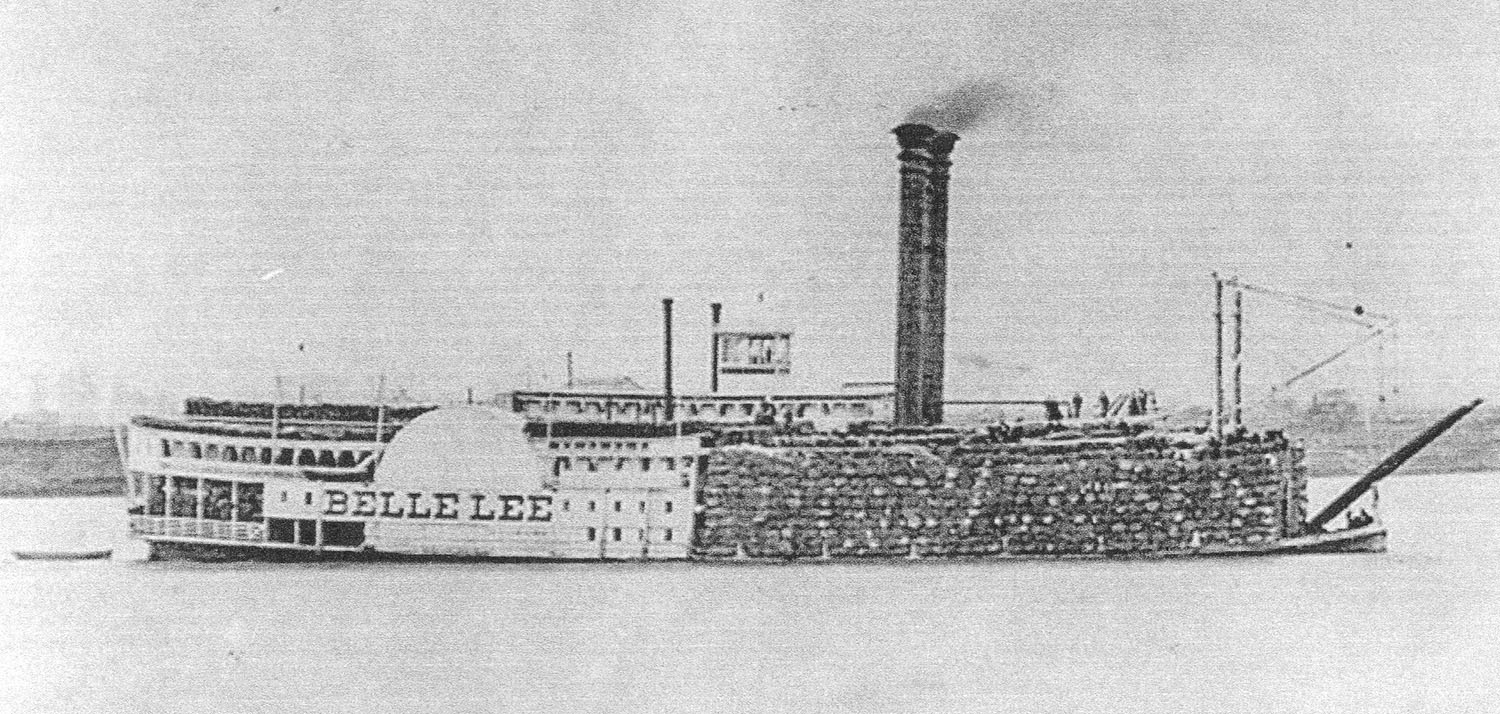Built in 1868 by the Barmore yard at Jeffersonville, Ind., the Belle Lee was a palatial packet. The wooden hull was 291 feet in length by 42.4 feet in width with a depth of 8.4 feet. Eight boilers provided steam for engines having 34.5-inch cylinders with a 9-foot stroke. The engines were cast by John B. Davis & Company of Louisville, Ky.
The big steamboat was named for the daughter of James Bridgeford of Louisville, who married Col. Phil Lee of the Confederate Army. The Belle Lee was initially under charter to Capt. Thomas P. Leathers, who operated the vessel in the New Orleans–Vicksburg trade.
It was during this period that Leathers incurred the wrath of Capt. John W. Cannon, said to have been due to the alleged violation of the charter terms and the cutting of rates. The quarrel made river columns in many newspapers along the Mississippi and Ohio and was reported by the New Albany Commercial on November 14, 1868: “Capt. John Cannon and Capt. Tom Leathers, we are informed, indulged in a knock-down at New Orleans Saturday. The difficulty arose out of the charter of the Belle Lee by Leathers and his subsequent violation of the charter. Capt. Cannon had the best of the fight, so our informant states.” It is said that this greatly publicized altercation was largely responsible in setting the stage for the famous race from New Orleans to St. Louis between the Robt. E. Lee and Natchez in 1870.
Capt. Anson McGill became master of the Belle Lee in 1869. Other officers included Capt. James Ostrander and Capt. William Underwood, pilots, with William Whitlow as mate and John Lenz and Ed Neff presiding over the engineroom.
In June of that year, the boat was foreclosed upon by the Barmore firm, with an outstanding debt of $113,000. This resulted in the riverboat being sold at auction on the courthouse steps in Louisville for the sum of $60,000. The new owner, Capt. John Smoker, entered the boat in the New Orleans trade with Capt. J.M. White as master.
On November 12, 1869, ownership changed again, with Capt. John Sinnot having one-half interest; Capt. John Tobin and Capt. John Cannon each retained one-quarter interest.
The Belle Lee carried many large cargoes of cotton, one of the most notable when it arrived at New Orleans on New Year’s Eve of 1874 with 5,908 bales aboard. The boat also had two barges in tow, loaded with a total of 8,362 sacks of seed; this was the biggest trip since before the Civil War. On this momentous occasion, the crew of the Robt. E. Lee presented the Belle Lee’s officers and crew with a set of deer antlers which were hung in the cabin. River reporters described the Belle Lee’s opulent white and gold main salon as being a dazzling sight to behold; a dozen chandeliers, having 36 lamps each, with sparkling glass pendants adorned the ceiling, with plush draperies on every stateroom door.
During the summer of 1875, the Belle Lee was taken to Metropolis, Ill., where the hull was enlarged to 327 feet, and the boat was renamed Mary Bell. With a cargo of 5,000 cotton bales, 8,000 sacks of seed and 500 barrels of oil aboard, the big sidewheeler was destroyed by fire within a half hour February 27, 1876, while tied up at Vicksburg.
Editor’s note: For questions or suggestions regarding the Old Boat Column, Keith Norrington may be contacted by e-mail at curatorkeith@yahoo.com.
Caption for photo: The Belle Lee underway with a large cargo. (Keith Norrington collection)




